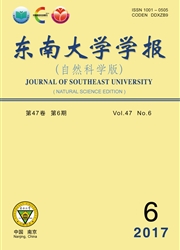

 中文摘要:
中文摘要:
在两端铰接ST12材质焊接工字形钢支撑等幅轴向反复循环荷载低周疲劳性能试验基础上,进行了Q235材质焊接工字形钢支撑低周疲劳性能试验.分析了2种材质的共47根支撑在试验载荷下的最大横向变形和最大抗压承载力特性,验证了文献及规范方法的可靠性.在假设加载幅值、试件几何特征以及钢材屈服强度对支撑低周疲劳寿命影响相互独立的基础上,提出了估算支撑低周疲劳寿命的经验公式.分析表明,翼缘宽厚比越小,长细比越大,加载幅值越小,屈服强度越低,支撑低周疲劳寿命越高.由于在地震作用时支撑构件位移时程不可预知,设计支撑时除应严格限制翼缘板件宽厚比外,还应适当采用低屈服点钢材及适当放宽某些现行规程对长细比的限制,以避免支撑过早断裂.最后,根据支撑不同损伤阶段的累积耗能比,指出可偏于安全的采用阶段Ⅰ的寿命估算公式来预估支撑的低周疲劳寿命.
 英文摘要:
英文摘要:
Based on the low-cycle fatigue behavior tests of welded I-section ST12 steel bracing members with pinned connections under constant amplitude reversed cyclic axial loading, the low-cycle fatigue behavior of welded I-section Q235 steel bracing members with pinned connections was examined. The test results about the maximum lateral deformation and the maximum compressive strength of 47 bracing members made of Q235 and ST12 were studied and verified in comparison with the results calculated by the relevant literatures or codes. According to the assumption that the geometry properties, loading amplitude and steel yield strength are independent of each other for estimating the low-cycle fatigue life, some empirical formulas are presented. It is found that the low-cycle fatigue life increases with the decrease in the width-thickness ratio of the flanges, the increase in the brace slenderness ratio, and the decrease in the loading amplitude and yield strength of the bracing members. Because the displacement histories of the bracing members can not be predicted during an earthquake, in order to avoid early fractures of the bracing members, besides limiting the width-thickness ratio of the flanges, low yield strength steel should be adopted and the brace slenderness ratio limitation in some current codes should be relaxed. Finally, based on the energy index ratios for different damage stages, it is proposed that the low-cycle fatigue life of brace members can be safely predicted by the empirical formulas for stage I.
 同期刊论文项目
同期刊论文项目
 同项目期刊论文
同项目期刊论文
 期刊信息
期刊信息
